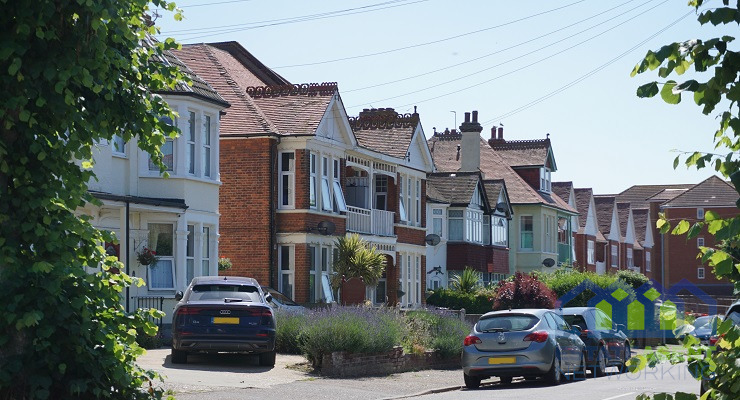Why it is important to cultivate good neighbourly relations
There may be a wealth of important factors and lifestyle criteria shaping the decision to buy a particular property, but the one thing that homebuyers have no control over is who their neighbours are. And yet, a harmonious relationship with the people living next door can make all the difference to the enjoyment of the property.
Establishing good relations with neighbouring households is something that every property owner should prioritise, as it can lead to a community that is safer, happier and more fun to live in. In an ideal world, living alongside each other enhances both parties’ lives or, as they say in the eponymous Australian soap, “that’s when good neighbours become good friends.”
On the other hand, problems with noisy neighbours, building and party wall disputes or garden boundary disagreements can make life a misery. Luckily, most issues can be settled with a simple conversation, especially if the groundwork of good neighbourly relations has already been laid. With this in mind, here are some of the most common complaints between neighbours and how to deal with them.
Noisy neighbours
Some people like a quiet life, in other homes there’s always something going on. Loud music and guests, the noise of machinery (lawnmower, power drill etc), children crying and dogs barking – these are some of the most common problems reported among neighbours.
A friendly chat is often all it takes to make the other party see sense and get them to modify their antisocial behaviour. If this strategy doesn’t lead to a peaceful resolution, it may be necessary to check whether any rules and regulations have been broken. Leasehold properties often stipulate no animals and no excessive noise, and noise may be restricted during early morning hours and late evenings. You can also report noise problems such as late night parties or continuous dog barking as a statutory nuisance to your local council who will investigate.
Garden fences and hedges
Neighbourly communication is highly recommended when it comes to maintaining or making alterations at the boundary. Here is just one of many sorry tales of neighbourly disputes involving the pruning of a garden hedge that could have been handled much more sensitively with tact and diplomacy. It may be the case that the neighbour had no idea of the nuisance caused by a high hedge, and the other side’s unilateral decision to chop it back will have been upsetting. Much better to negotiate a solution that both parties can agree to.
If no compromise is possible, it is possible to make an official complaint to the council about a neighbour’s (semi-)evergreen hedge if it is more than 2 metres tall and obstructing light or views,
A fence on the boundary usually indicated shares ownership and maintenance responsibility, though the specific information contained within the Property Deeds (freehold) or the Lease (leasehold) will be the deciding factor.
Problem trees
Trees can be another source of contention between neighbours. By law, you are allowed to trim any overhanging branches of tree or hedge that protrude onto your land back to the boundary. Permission from the neighbour is required to go onto their land to cut back branches, otherwise the work will have to be carried out from the other side.
If raising the issue with the adjoining neighbour is proving fruitless, the local council can intervene using their powers under Part 8 of the Antisocial Behaviour Act 2003. Needless to say, all efforts should be made to resolve the dispute informally first, seeking legal recourse only as a last resort.
Finally, it is worth checking if there is a Tree Preservation Order on particular trees, which may prohibit some activities being carried out. A local planning department should be able to help provide the necessary information.
Building work
If the first thing your neighbour hears of your building work is the sound of a sledgehammer coming through the wall, it is not surprising that they might be upset. Prevention is always better than cure, so every effort should be made to reassure the neighbouring household that they won’t be negatively affected.
In the case of terraced or semi-detached houses or adjoining flats, there are also strict legal requirements for notification if the proposed works fall under the Party Wall Act 1996. The building owner must give notice at least 2 months before the planned start date, and an agreement with the affected neighbours must be in place before work can begin.
If planning application is being sought, the neighbours will be given the opportunity to share their opinion on the project and they can make an objection, which the council will take into consideration in their decision to grant or refuse consent. Consulting with the relevant neighbours about the proposals and, where necessary, agreeing to modify the building plans, can help avoid unexpected delays and other issues when the application is submitted.
Property neglect
A neglected garden can constitute a private nuisance (meaning a continuous, unlawful and indirect interference with the use or enjoyment of land) or public nuisance (unlawful act or omission which endangers or interferes with the lives, comfort, property or common rights of the public), according to the Environmental Protection Act 1990 and the Clean Neighbourhoods and Environment Act 2005.
From excessive weeds to piles of rubbish, abandoned vehicles or machinery, if you’re not getting any response from the neighbour, you can report the nuisance to the Environmental Health Department of the relevant local council, who can take legal action.
What’s more, under the Wildlife and Countryside Act 1981, it is a criminal offence to plant or let grow in the wild specific weeds including Japanese Knotweed, Giant Hogweed, Himalayan Balsam and New Zealand Pigmyweed.









